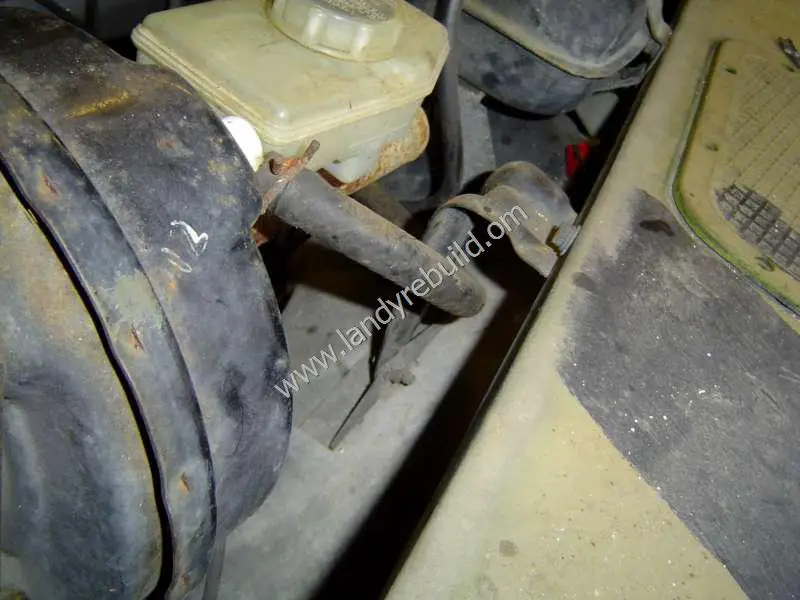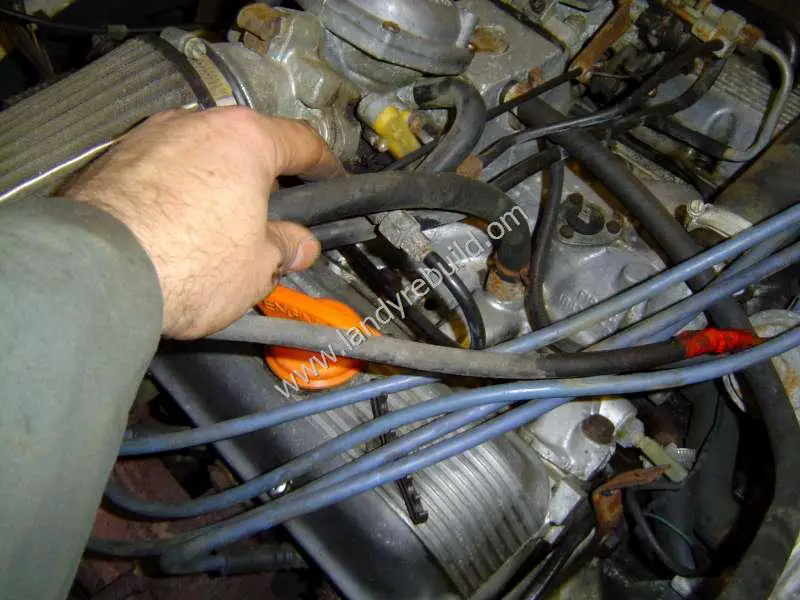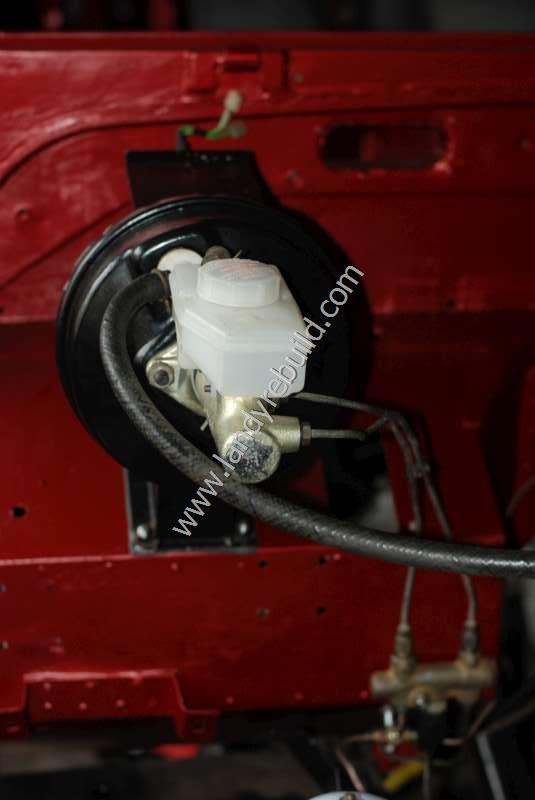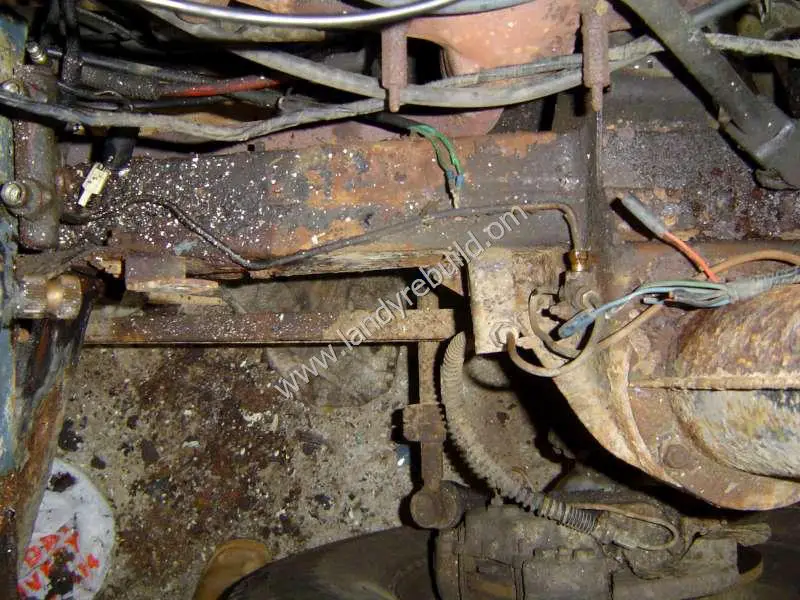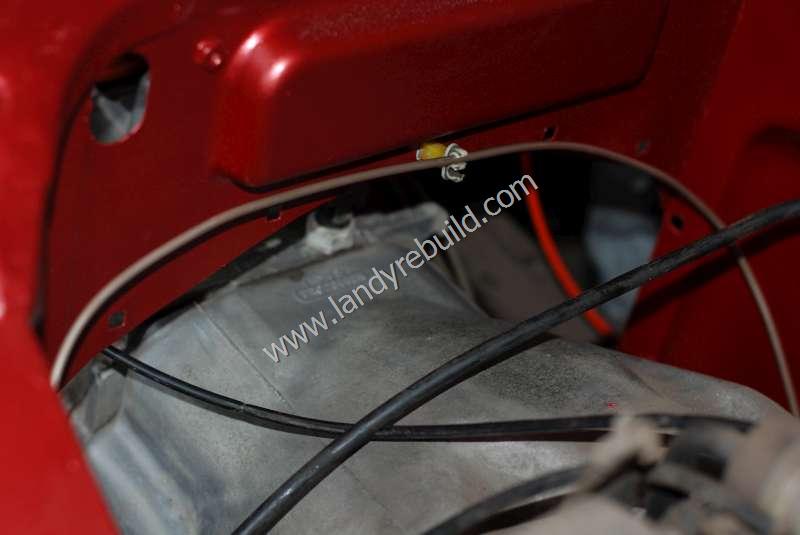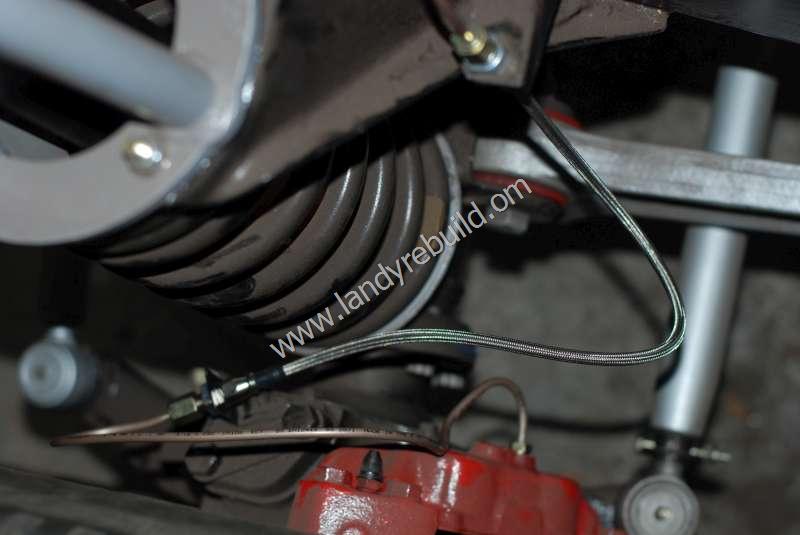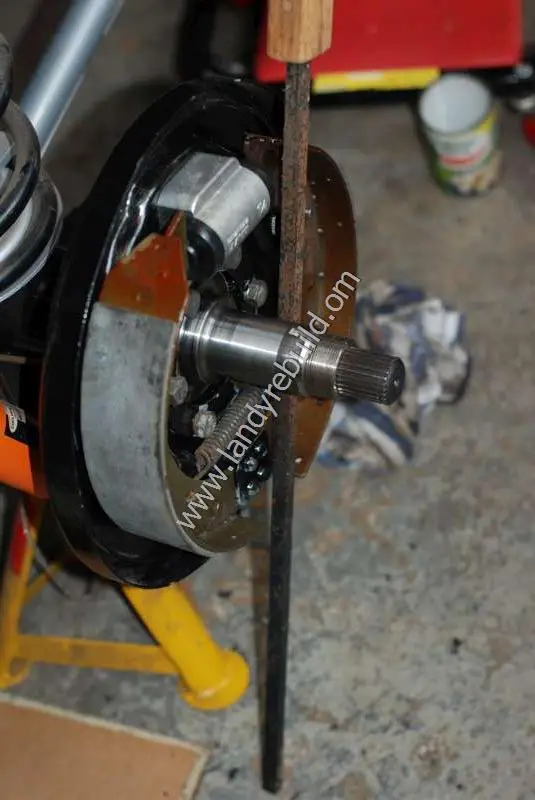The brake system consists of drum brakes with shoes at the rear, and disc brakes with pads at the front. The handbrake is a transmission brake, also with a drum and shoes, which works on stopping the rear propshaft from rotating.
I had already obtained a new brake master cylinder, but before removing the old one I wanted to make sure I knew where the servo vacuum hose went:
The new master cylinder was installed on the bulkhead and the pipes reconnected to the shuttle valve.
The brake shuttle valve itself controls the flow of brake fluid between front and rear. If there is a sudden pressure loss at one end of the vehicle, all the braking force is transmitted to the other end. That's the theory anyway. Of course when it comes to bleeding the brakes sometimes the shuttle valve can come into operation, making this job difficult!
This is also where the brake failure switch is connected. I opened the shuttle valve to check the interior, and everything was in good condition, including the seals. Before reassembling it I rinsed it in clean brake fluid.
Turning my attention to the brake pipes, I didn't really like the way the nearside front brake pipe was routed. It runs from a T-junction at the offside front wheel, to the front of the chassis, across the front under the radiator, and then back along the chassis to the nearside front wheel. As the pipe was going to be replaced anyway, I decided to route the front brake pipes slightly differently. A pipe now runs from the shuttle valve to a T-junction (which is now mounted on the bulkhead below the shuttle valve instead of at the offside front shock absorber mount). Two pipes then run from this T-junction, one to the offside front wheel, and the other runs against the bulkhead, over the gearbox tunnel, and down to the nearside chassis where it reaches the nearside front wheel. You can see the old route and T-junction in the first photo below; and the second photo shows a trial fit of the new route (it was properly secured when finally fitted in this position).
The supports for the flexible brake hose on top of each swivel housing were removed and re-attached at a 45-degree angle to provide a better route for the new brake pipe. New calipers were also fitted. Here's the nearside one:
New brake pads were also obtained, obviously. I bought these online from EBC brakes as I'd had good service from them before.
At the rear of the vehicle, new slave cylinders were fitted, and the brakes reassembled. There's a trick to doing this. The springs need to be fitted in the correct position to the brake shoes first. Then the top end of each brake shoe is fitted into the slave cylinder.
In order to get the lower end of each brake shoe tucked into the retaining plate, you need muscles like The Incredible Hulk. Unfortunately Dr. Banner was otherwise engaged so I resorted to Archimedes' principle. A length of bar, wedged carefully against the stub axle, provides sufficient leverage to easily stretch the lower spring, enabling the brake shoe to be moved behind the retainer.
Once everything was in place, brake fluid was added and the brakes bled. The rear slave cylinders immediately started leaking. Even though they were new, they'd been kept on a shelf for a good few years during the rebuild, so obviously they could not be returned as the warranty had run out. A couple of words of advice here, people:
- Do not buy Britpart when it comes to crucial components like brake cylinders or rubber seals.
- Do not buy any parts until you're ready to fit them.
